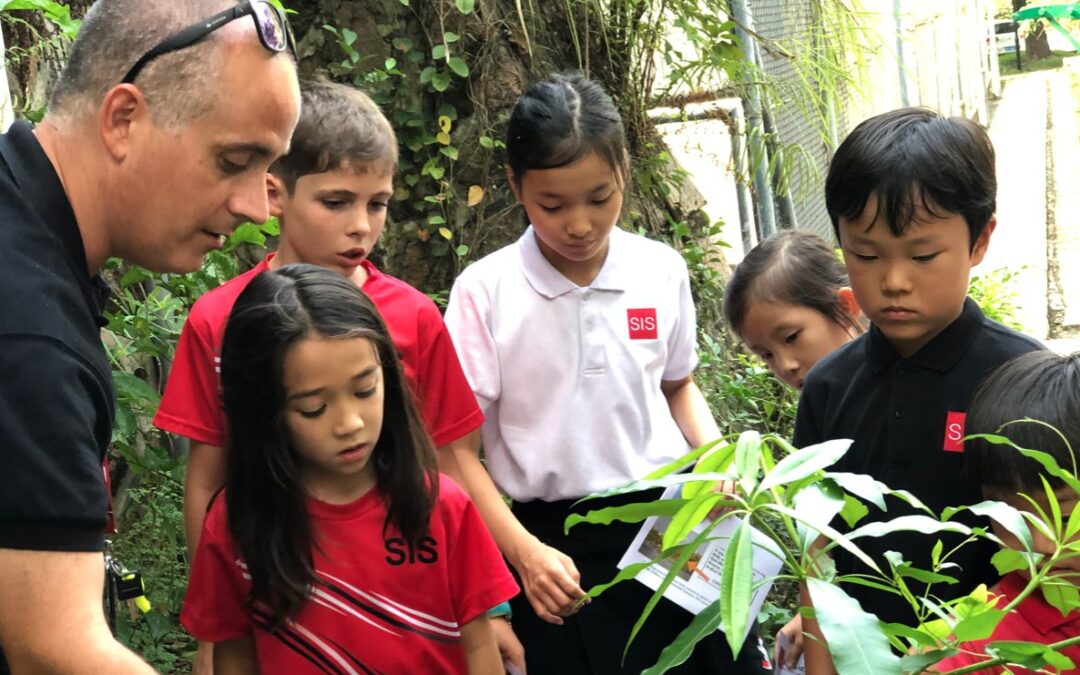Connecting Students with Nature, Big and Small
By Kevin O’Shea, Primary and Environmental Educator, Shekou International School (SIS)
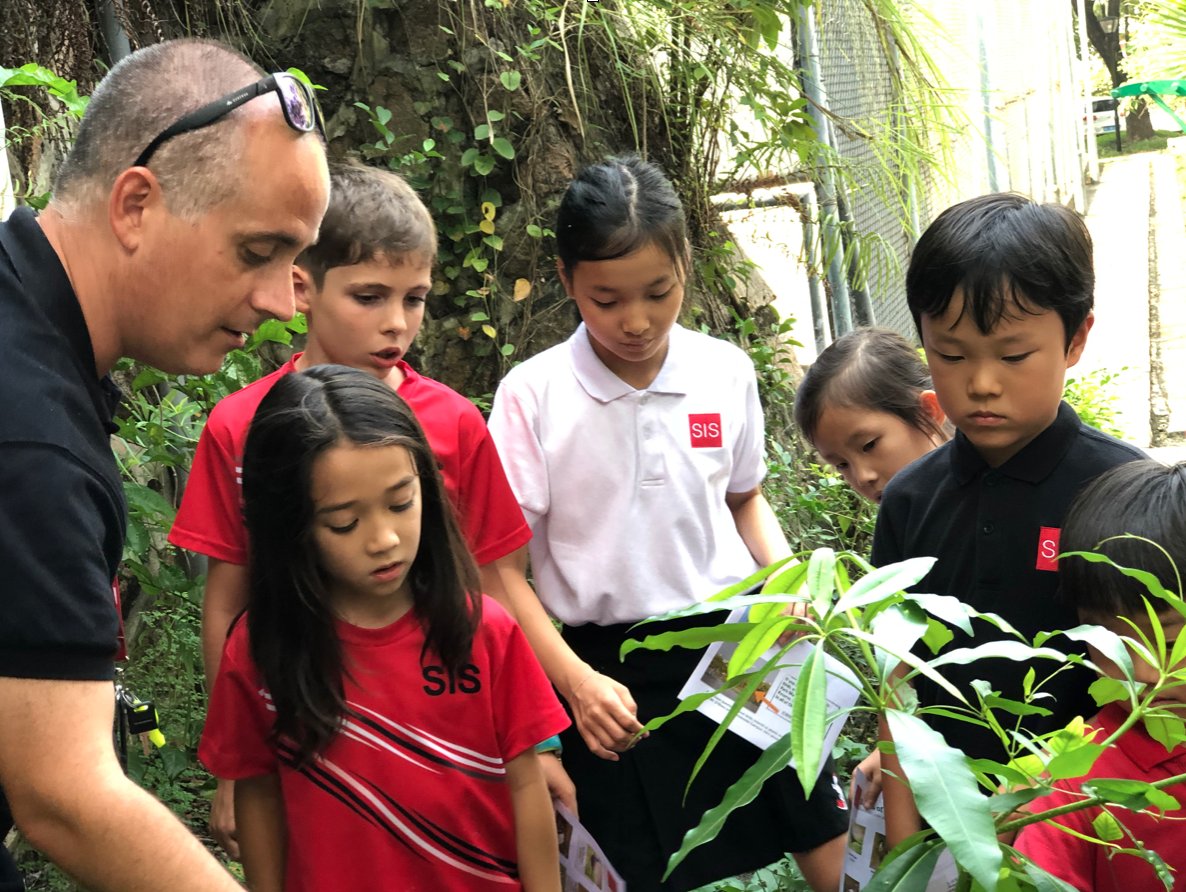
More than any other time in the past, we as educators have a duty to connect those in our classrooms with the natural world. We have a duty to engage students, get them excited about local biodiversity, and simply care for the world outside of the classroom.
And more now than ever before, we as educators need to engage ourselves with the outdoors and get connected with nature. We need to walk the walk when it comes to teaching our students abut sustainability and other environmental topics.
In order to protect nature and care about the world around them, students need to have a connection with it. If they love it, they will naturally take care of it now and as they get older. Many young learners we meet every day have a clear disconnect from the natural world, as do their caregivers. But at school, we can connect them in small and big ways. We can ignite the fire and passion to be environmental change-makers. We can start small and as we work through the grade levels and watch our learners get older, we can get bigger with projects and ideas.
Primary Years
One of the easiest ways to connect primary students is by teaching them about the things they see every day. Teach them about the birds, bugs and plants on campus. Get them gardening as well. I am a firm believer that students should be gardening throughout the year. Don’t wait until you have a unit of inquiry about growth cycles or a science unit about food production. Start at the beginning of the year and continue throughout the seasons. Garden outside and when it’s too cold for that, move things indoors.
My Kindergarten class has turned an unused space outdoors next to our classroom into a gardening area. One of the daily classroom duties is “Kindergarten Gardeners.” Each day, students come outside during free-choice time and water the plants, transplant seedlings to larger pots and plant seeds. In a previous school, I used gardening as a reward, and it was far more successful than any number of stickers. Students would bend over backwards to have the chance to tend to the tomatoes, radishes and peppers. They learned where food came from and about the amount of work involved in caring for it.
One year we had a basil crop attacked by caterpillars. Students were upset but learned valuable agricultural lessons. They learned that although those caterpillars would develop into valuable pollinators, they could also be very harmful to farmers and food security in general.
During the caterpillar “ordeal,” they also witnessed wasps attacking the caterpillars, learning that what they once thought to be “scary” insects had a valuable role as natural bio-control agents. After deep discussions, that Grade 2 class changed their opinions on many insects and looked at them from a very different perspective.
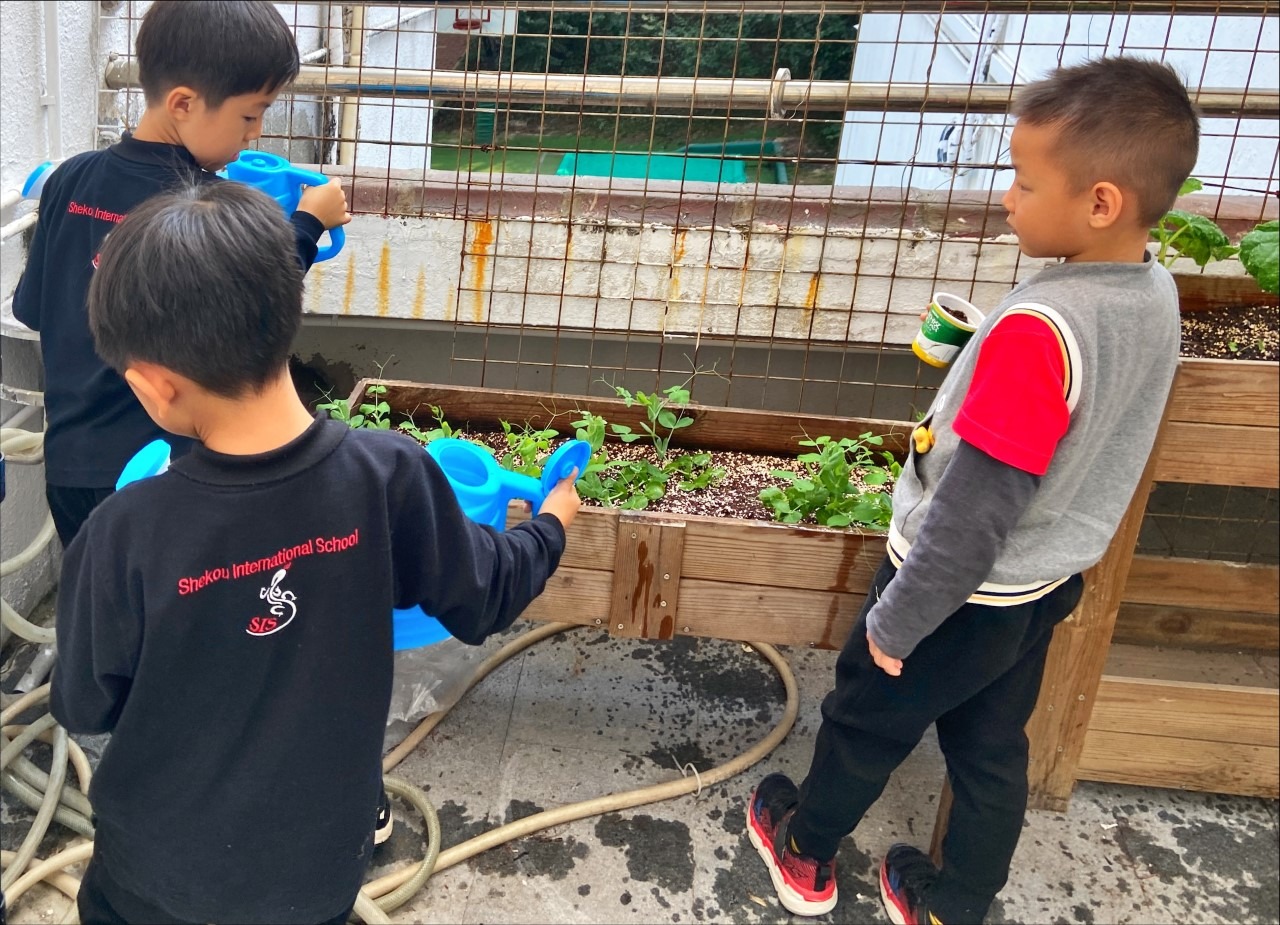
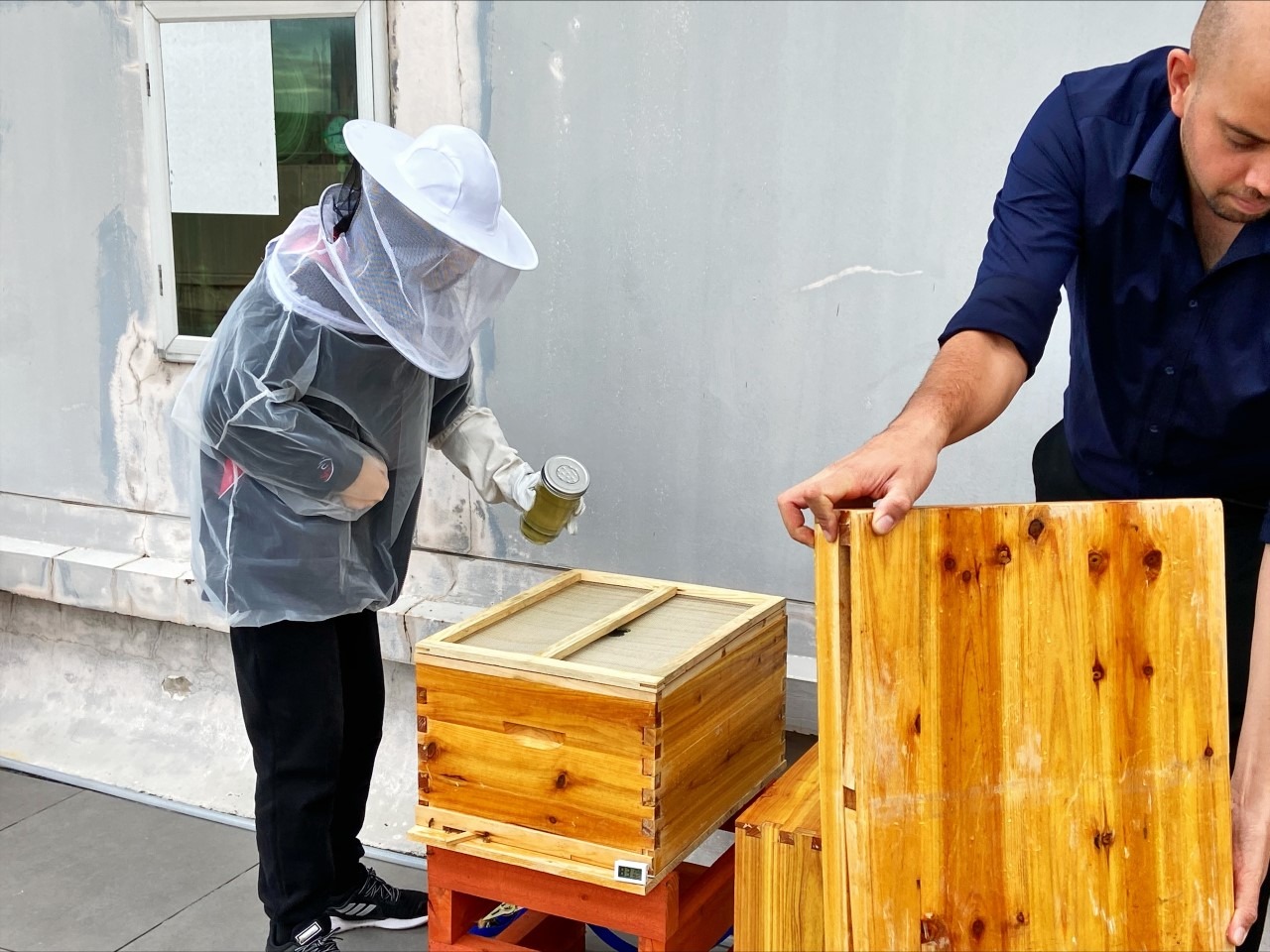
Middle and Secondary Years
As students get older and move into Middle and High School years, we need to engage them in different ways. We need to be very hands-on with nature connections; but they are a more complicated and knowledgeable audience.
At Shekou International School, one of our high school faculty has spear-headed a beekeeping program. He has created a beekeeping club for middle and high school students at our new campus. Not only has he recruited students to learn about becoming beekeepers, but he has recruited other faculty members to learn as well. As students and teachers learn to build hive boxes and frames, conduct hive inspections, examine the health of the bees and queens, and feed the bees, they are all learning valuable lessons.
As teachers, we often share the importance of pollinators in our ecosystems with students. We normally do it by sharing books and watching videos with a class, but that is nowhere near as meaningful as holding an actual frame filled with bees in your own hands. Students can learn about the importance of flower diversity for bees — but planting those flowers in planters around the hives and caring for them, researching which flowers are more attractive and pollen rich and beneficial for the bees, really instills a passion and understanding of the needs of these valuable insects.
Always Connecting
There are many exciting things happening at SIS to connect students with the outdoors. As each year passes, teachers are understanding more about the importance of Environmental Education, the holistic umbrella that outdoor education and sustainability fall under.
Exciting initiatives will continue to grow, and they can at your school too. Start small and grow projects over time. As educators, you first need to light a spark under yourself and then share the passion and excitement with your students.
If we can teach students to love insects, local birds, trees on campus and the ecosystems around them, they will grow up to be stewards of nature in some capacity. Connecting kids, big and small, with nature should never be a one-off thing. It should never be confined only to Earth Day or a unit of inquiry. It should happen constantly. Bringing nature into the lives of our students is simply a win-win situation.
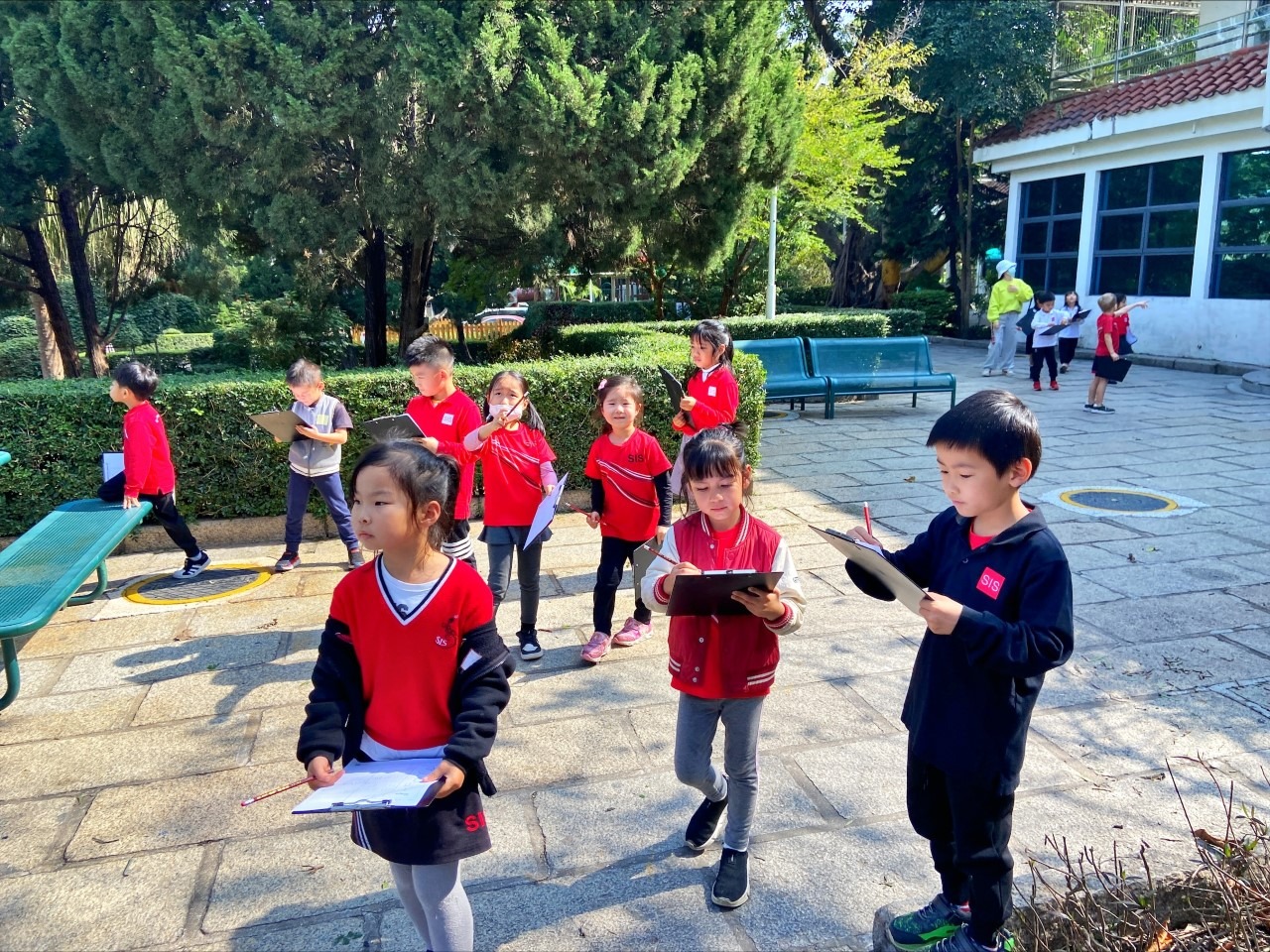
Follow Kevin on Twitter at @MadForMaple. You can find and listen to Kevin’s “Nature Talks Podcast” here; you’ll dive into interviews and discussions about connecting learners of all ages with the outdoors and nature.
This article was originally published in the January 2022 edition of ISS Newslinks.

